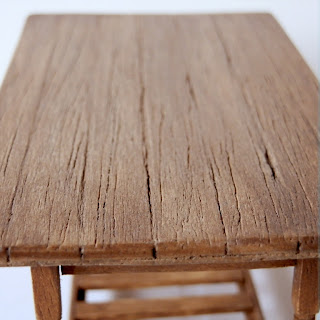If you follow my blog, you probably have already read that glass was scarce and expensive back in the 19th century. Actually, even in the first half of the 20th century as well. My mom was born in 1927. She lived in a brand new city, planned and built to be the new capital of a reasonably rich state, Minas Gerais. The city is Belo Horizonte. Her family was poor, but that's another story! And she told be that there was only one store with a window there, for a very long time.
Mas ainda assim as lojas precisavam atrair fregueses, e é para isso que vitrines normalmente servem. Então, como é que eles conseguiam isso? Descobri, examinando fotos antigas, que eles penduravam alguns dos produtos da loja na porta, ou perto dela:
But stores still needed to attract customers, and this is what shop windows usually do. So, what did they use instead? I found out, by examining old pictures, that they'd hang some of the store items on the door, or next to it:
Até hoje, em pleno século 21, lojas de tecido tradicionais no centro de São Paulo, em uma das ruas de comércio mais tradicionais da cidade, eles ainda usam esta forma de expor seus tecidos:
Even now, in the 21st century, traditional fabrics store in old downtown of Sao Paulo, on one of the most traditional commercial streets, they still use this way of showcasing their fabrics:
Bem, naturalmente era isso que eu tinha que fazer! :)
Well, that's what I'd have to do, then! :)
O problema que eu tinha é que um dos tecidos que eu queria usar não era de algodão. É sintético... E a solução tradicional que eu aprendi para drapear só funciona com algodão ou seda, ou seja, fibras naturais. Então eu precisava usar um método novo... Felizmente encontrei um tutorial muito interessante no blog da Kris. Nele ela ensina a montar um armário de cozinha, mas no meio ela mostra uma solução bem engenhosa para drapear tecidos: colar uma folha de papel alumínio nele! Absolutamente brilhante!! Eu tinha que tentar!... E, de fato, funciona maravilhosamente bem:
The problem I had was that one of the fabrics I wanted to use was not cotton based. It was synthetic... And the traditional draping solutions I learned to use for cotton or silk, or natural fibers in general don't work at all! So I needed a new method... Fortunately I came across a very interesting tutorial by Kris. She shows how to make kitchen cabinets, but in the middle she came up with this very ingenious solution to drape fabric: glue it to aluminum foil! Absolutely brilliant!! I had to try it!... And indeed it worked beautifully:
 |
| Cole no topo. Glue the fabric on the top. |
Eu tinha preparado outro como esse, usando um cetim branco. Mas o gato da minha mãe visitou meu 'bagunceliê' (como ela chama) quando eu não estava lá e decidiu que tinha que exterminar aquele "fantasma" branco, que eu já tinha colocado na porta da loja, para ver como ficava... Pobre tecido, nem viu o que o atingiu! Achei os "restos" perto da porta do ateliê... Então tive que fazer mais um. Desta vez decidi usar um tecido de algodão estampado. Creio que não eram tão comuns naquela época, então a loja teria orgulho em exibi-lo. Além disso, não parece tão "fantasmagórico" quanto o branco parecia, rsrs.
I had prepared another of these, using white satin fabric. But my mom's cat visited my studio while I wasn't there and decided he had to exterminate that odd "ghost", which I had already placed by the door to check how it would sit there... Poor thing, never saw what hit it! I found the remains near the studio door... So I had to make another one. This time I decided to use some cotton fabric, with a printed pattern. I figure they weren't that common back then, and the store would be proud to exhibit it. Besides, it won't look so "ghostly" as the white one did, lol!
.
Tecido de algodão não precisa do truque com a folha de alumínio. Basta usar uma solução de gel para cabelo (sim, você leu direito) diluído em água (uma gota de gel para uma xícara de café de água). Aplique com um spray sobre o tecido, drapeie como quiser e mantenha no lugar com alfinetes, espere secar e pronto! Você verá o outro de algodão que fiz quando mostrar as fotos da loja já pronta... :) Também fiz alguns rolos de tecido para colocar sob a mesa que fiz antes. É mais fácil enrolar o tecido sobre a mesa. Se tentar fazer nas mãos, ele vai enrolar todo torto, acredite em mim.
Cotton fabric doesn't need that foil trick. All you need to do is use a solution of hair gel (you read it right) diluted in water (one drop of gel to at least 6 table spoons of water). Spray, drape as you wish, hold in place with pins, wait for it to dry and voilá! You'll see the cotton one when I show the pictures of the finished store... :) I also made some large round fabric bolts to place under the table I made before. It's easier to roll the fabric on the table. If you try to do it in your hands it won't roll evenly, trust me.













































